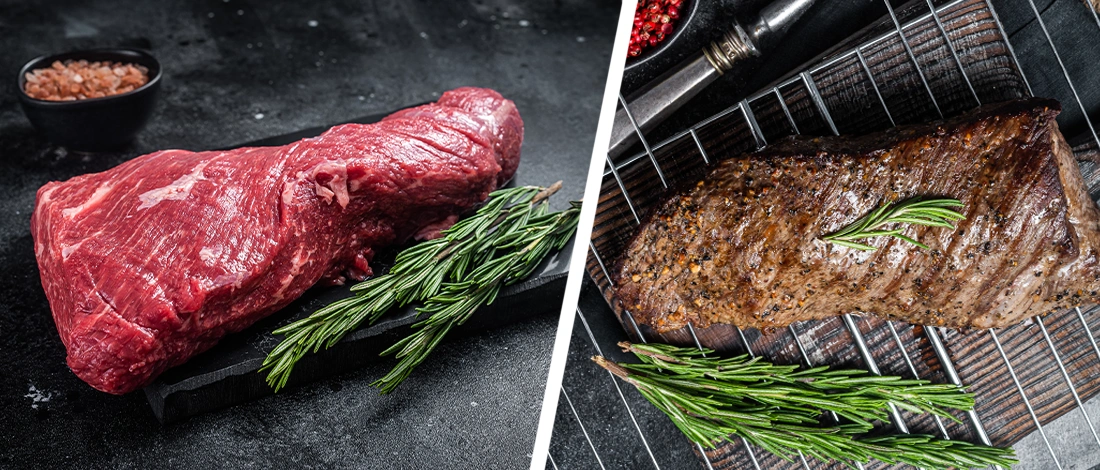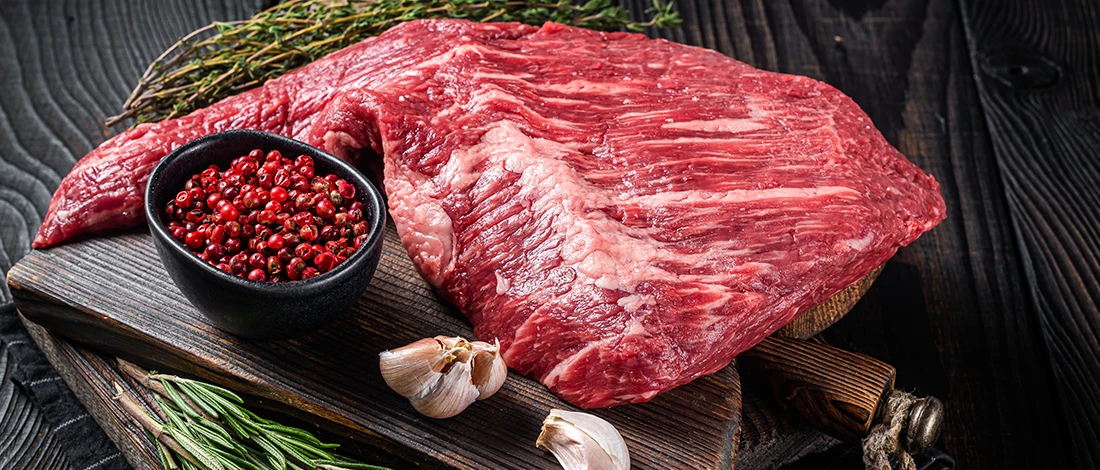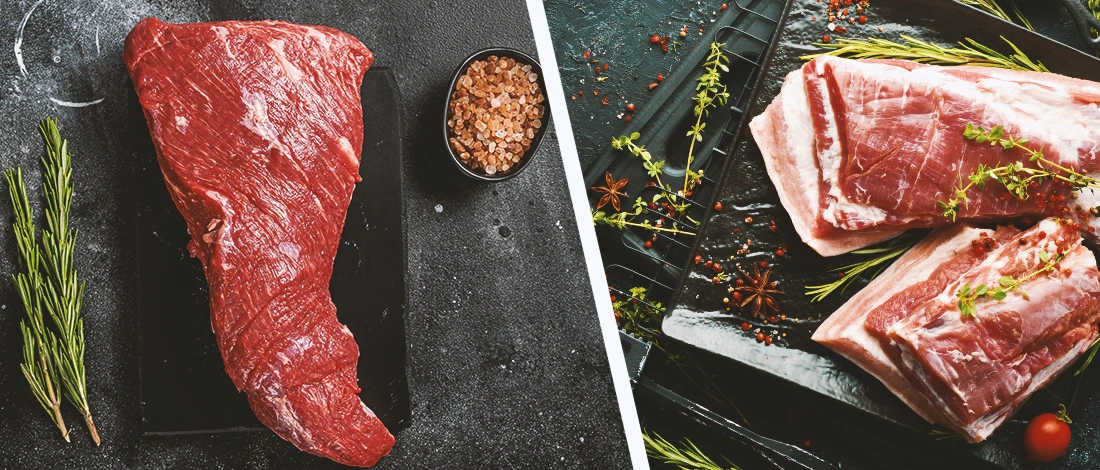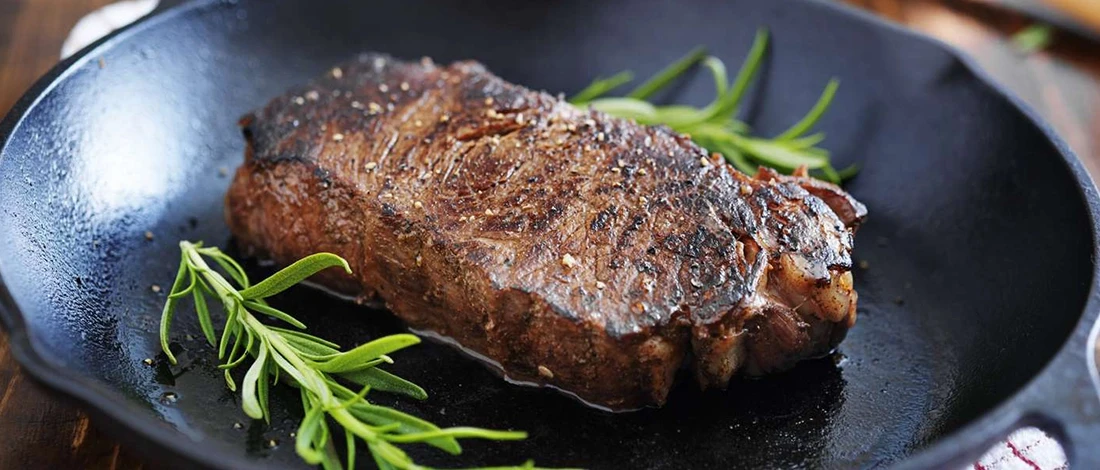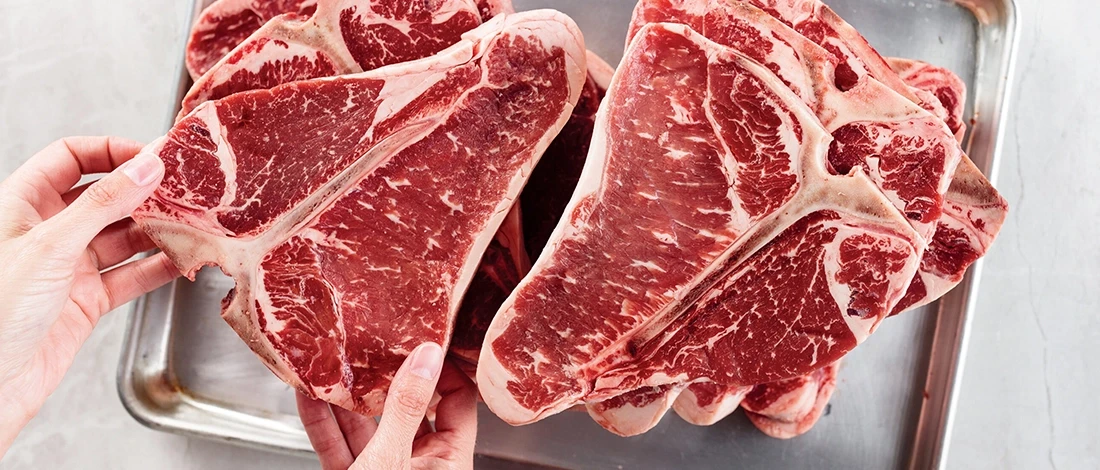There are several delicious cuts of meat that come from cows. Tri-tip is undoubtedly among them - it is very popular, but still many people don’t know how to handle it.
The main issue about tri-tip is cutting. This can be complicated because of the grain and muscle fibers going in different directions, which makes cutting tri-tip quite a challenge.
Are you wondering how to cut tri-tip and why this is important? After 48 hours of research - learning and trying - we feel confident to answer these questions.
Quick Summary
- To cut tri-tip steaks, begin by trimming excess fat and silver skin, and slice against the grain.
- Tri-tip is a flavorful cut of beef for grilling or oven cooking.
- A 2003 study in PubMed evaluated the palatability of various beef muscles, including tri-tip, finding it to be among the cuts rated as juicy, contributing positively to its overall palatability and consumer desirability [1].
- Properly trimming excess fat and silver skin is essential for improved tenderness.
What is Tri-Tip Steak?
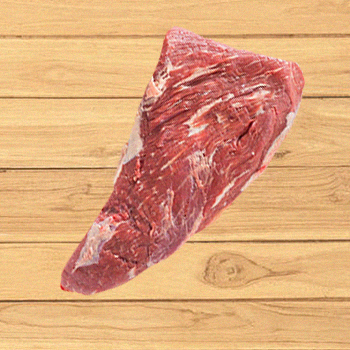
A tri-tip is a cut of meat from the underside of the sirloin of a cow. It comes from the toughest muscles on the bottom sirloin, where different areas of muscles meet.
There are only two tri-tips in the cow, one on each side. It is a steak with many marbling, boneless, around 1 inch thick, thicker in the center, and thinner near the outside edges. It can weigh about 1.5-3 pounds, and it is enough for four or more people.
The tri-tip cut has low-fat cap content, it is juicy with a nice, beefy flavor with a tender bite, but you will get this result only if you cut it properly and the meat cooks well.
A 2020 study published in PubMed investigated the impact of various tenderness factors on beef loin, tri-tip, and heel, finding that lipid content, collagen content, and proteolysis significantly influence the tenderness of these cuts, with collagen content being a universal predictor for all three [2].
Because of its flavor and tenderness, smoked tri-tip is a popular cut of beef. But, its triangle shape can seem confusing, especially when you cut it for the first time.
Related Articles:
How Tri-Tip Steak Got Its Name
The name tri-tip comes from its triangle shape, with one side shorter and the other turn slightly longer, so it resembles a boomerang or crescent.
A long time ago, tri-tip roast was served as ground into hamburgers or stew due to its toughness.
In the late 1950s in Santa Maria, CA, butcher Bob Schultz separated the triangle-shaped cut of beef and grill it like a steak.
He first gave it the name Santa Maria Steak, which is still sometimes used, especially in California. After a few years, he named it tri-tip.
Should I Cut It Before or After Cooking?
People are often asking if they should cut tri-tip steaks before or after it is cooked. You can choose any of these procedures, but I recommend you first cook it and then do the slicing.
There are several methods of how tri-tip can be cooked - you can broil it, roast it, grill it or smoke it.
Don’t overcook tri-tip roast because it will be rubbery and tough. Bake it medium-rare. You can also add olive oil for better results.
After you prepared it in your favorite way, cover it with foil and let it rest for at least 10-15 minutes. Don’t skip this step!
The resting period will help your beef to be juicy - its natural juices will reabsorb, settle down and stop flowing.
If you cut it before resting, the juices will flow out, and the steak will remain dry.
“Roast beef, medium, is not only a food. It is a philosophy.”
- Edna Ferber, Writer
Also Read: How to Grill Tri-Tip Steak Strips?
How to Cut Tri-Tip Properly

Cutting the tri-tip steak properly is as important as preparing it right. If you don’t do it correctly, your beef will change its structure, won’t roast correctly, and slices will be chewy and tough.
As we have already mentioned, tri-tip contains two different grain directions, which makes cutting more difficult.
It would be good to slice a tri-tip against the fibers – first cut it in half, then slice a tri-tip piece individually.
1. Use the correct tools
For proper cutting, you will need correct tools like those for cutting and serving, which you already have in your kitchen:
- Non-slip cutting board – the best choice is a sturdy cutting board with grooves. Gullies will help you to grab the juices while slicing the beef.
- Fork and knife – make sure your knife is well sharped. Feel free to take a look at our post about the best knives for cutting meat if you wish to learn which sharp knife we highly recommend.
- Serving platter – depends on the size of the cut and the way you will decorate the dist.
2. Search for grain
Once cooked, most tender tri-tip meat cut has to be sliced across the grain. It will be easier to find it before seasoning when the meat is raw.
Check the beef cuts before cooking to determine the directions muscle fibers and fat cap go through the meat. You will see two different grain patterns, which are cutting tri-tip vertically in the seam of fat cap.
This seam is splitting the tri-tip roughly in half, but probably with one side longer than the other. On the smaller cut, the fibers run vertically, and in the longer half, they run diagonally.
3. Season and roast tri-tip steak
Turn the heat on and roast the tri-tip steaks.
4. Leave it to rest and then slice it
The right thing to do after cooking is to let the tri-tip beef rest. Leave it at least five minutes before cut tri-tip in half from top to button. Slice it correctly to have the perfect cut which will fit every recipe.
5. Cut it along the seam of fat cap
You will get two different size halves, but each with the grain. Take one half and inspect its grain again. Cut the slice against the grain.
Make sure to angle the knife to cut the perfect tri-tip slice.
When you finish with the first, take another half of beef. Inspect its fibers; they will be differently oriented than in the first piece.
Take your time and slice tri-tip by repeating cutting against its grain directions.
It is essential to know that the grain will change direction at one point. You’ll have to rotate your tri-tip then and keep cutting slices against the new grain direction.
Also Read: How to Cut Frozen Meat?
References
1.https://pubmed.ncbi.nlm.nih.gov/22063674/
2.https://pubmed.ncbi.nlm.nih.gov/32736289/

